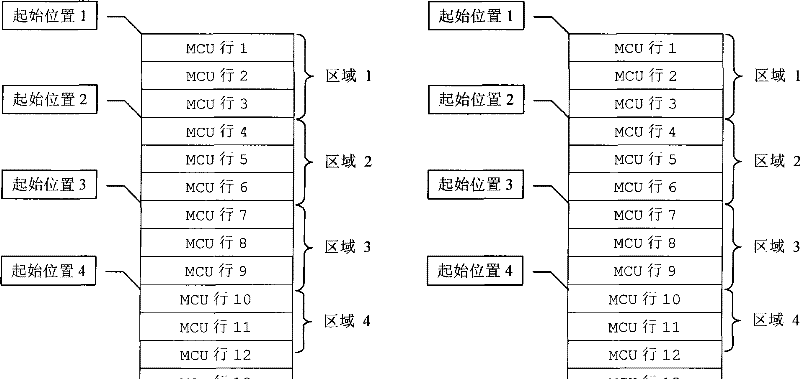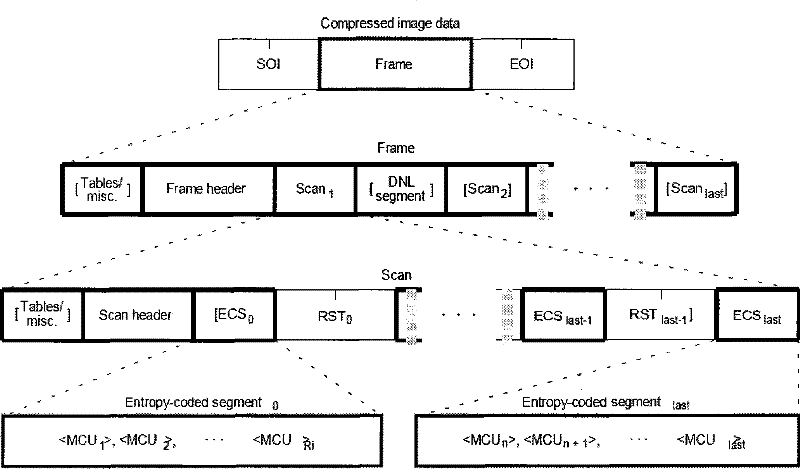Incremental model JPEG image segmentation decoding method for embedded system
A technology of an embedded system and a decoding method, which is applied in the field of progressive mode JPEG image segmentation decoding, can solve the problems of occupied calculation amount and difficulty, and achieve the effect of reducing the requirements of memory resources and the demand of calculation amount.
- Summary
- Abstract
- Description
- Claims
- Application Information
AI Technical Summary
Problems solved by technology
Method used
Image
Examples
Embodiment Construction
[0023] The present invention will be further described below in conjunction with the accompanying drawings and specific embodiments.
[0024] Such as figure 1 As shown, firstly, the JPEG image should be divided into a series of regions according to specific requirements and environment (such as available embedded system memory size), and each region contains one or more MCU (Minimum Code Unit, minimum coding unit) lines. Assume that the JPEG image contains two Scans (Scan1 and Scan2 respectively), and each Scan contains 15 MCU lines. Such as figure 2 As shown, the JPEG image is divided into 4 areas: the first area contains MCU lines 1-4, the second area contains MCU lines 5-8, the third area contains MCU lines 9-12, and the fourth area contains MCU lines 13-15. The number of MCU rows included in each area may be fixed or variable, and may be determined according to actual needs, such as the size of available memory.
[0025] Then, it is necessary to obtain and save variou...
PUM
 Login to View More
Login to View More Abstract
Description
Claims
Application Information
 Login to View More
Login to View More - R&D
- Intellectual Property
- Life Sciences
- Materials
- Tech Scout
- Unparalleled Data Quality
- Higher Quality Content
- 60% Fewer Hallucinations
Browse by: Latest US Patents, China's latest patents, Technical Efficacy Thesaurus, Application Domain, Technology Topic, Popular Technical Reports.
© 2025 PatSnap. All rights reserved.Legal|Privacy policy|Modern Slavery Act Transparency Statement|Sitemap|About US| Contact US: help@patsnap.com



